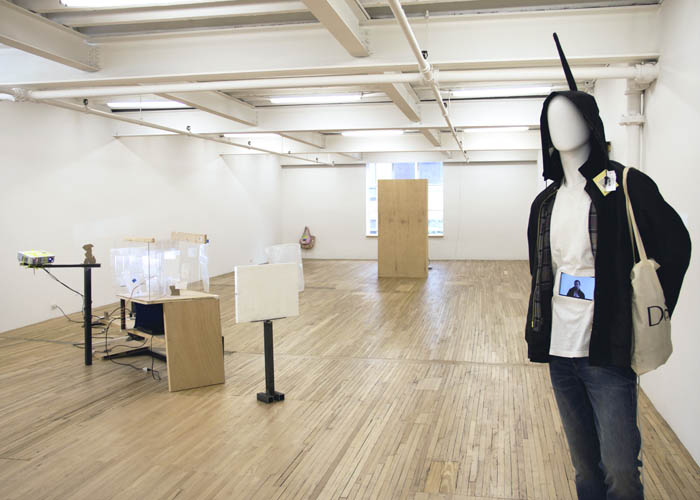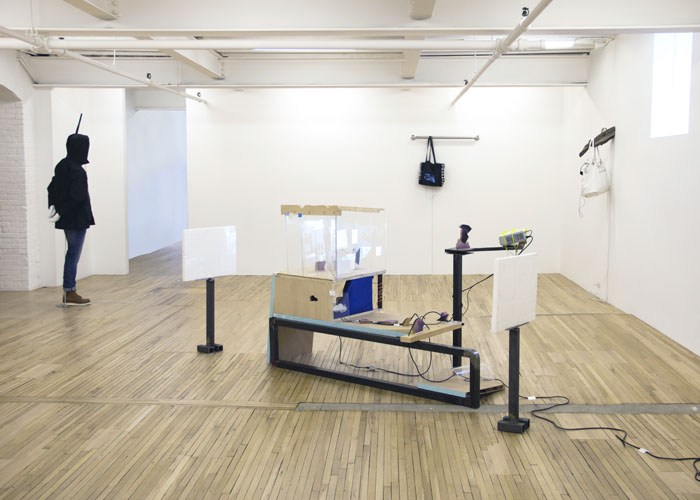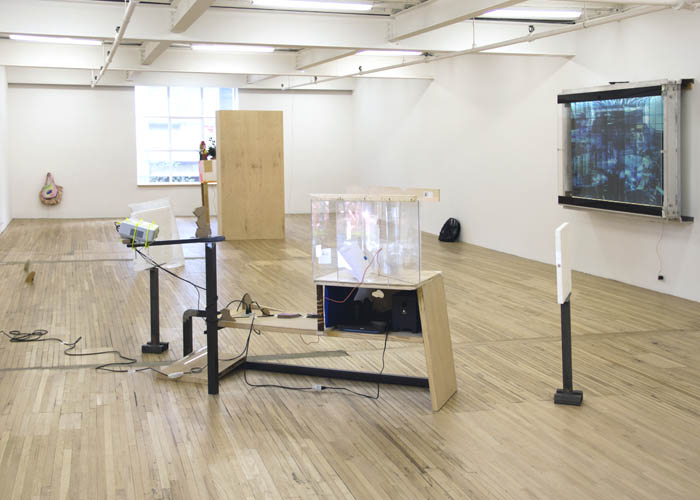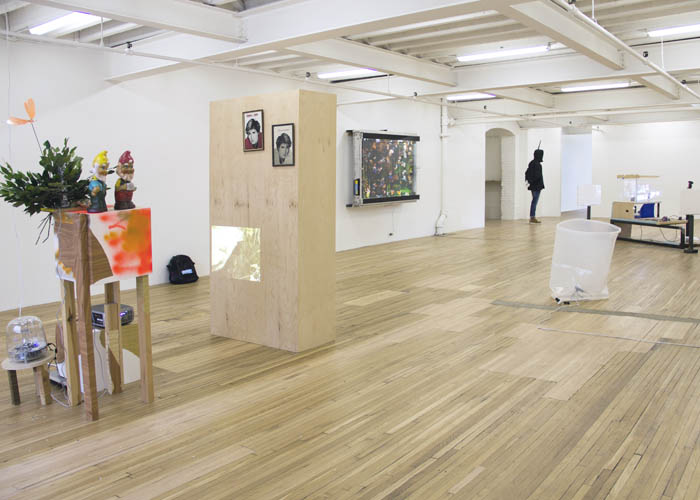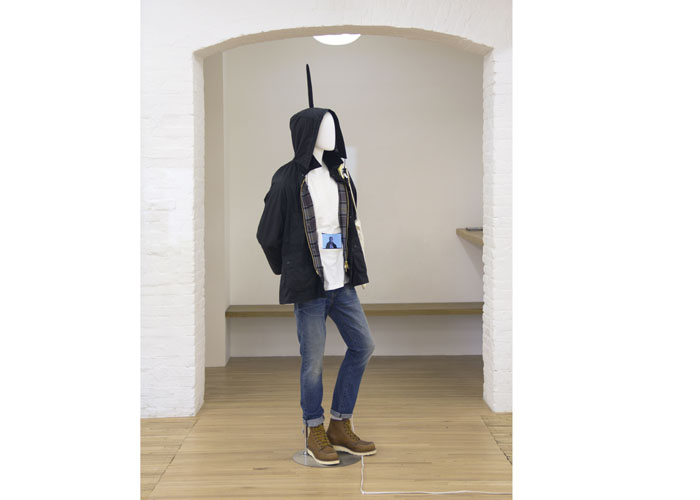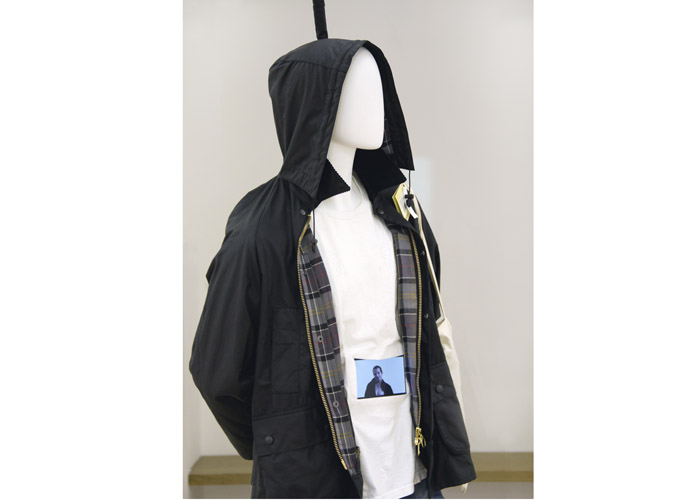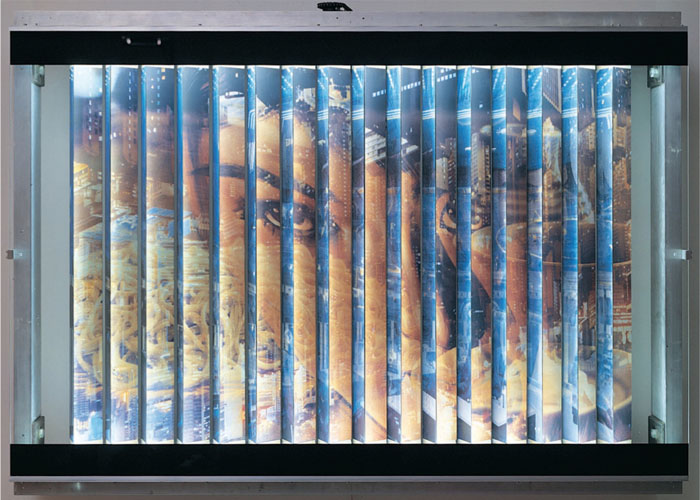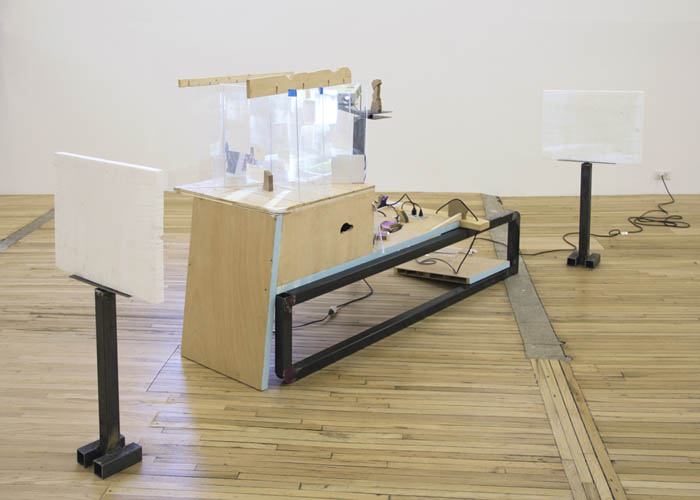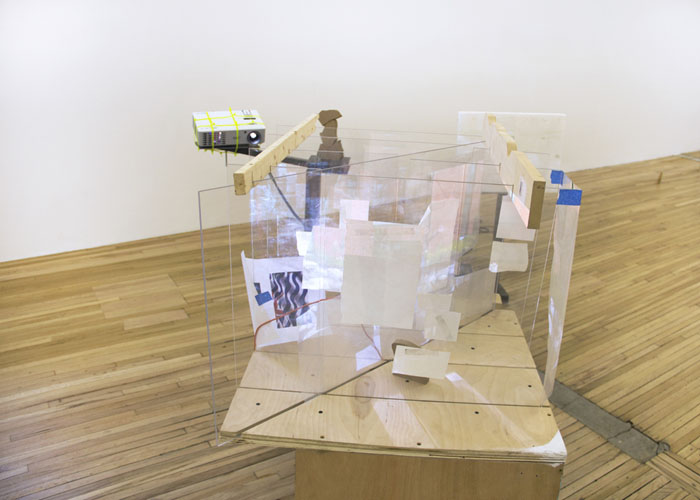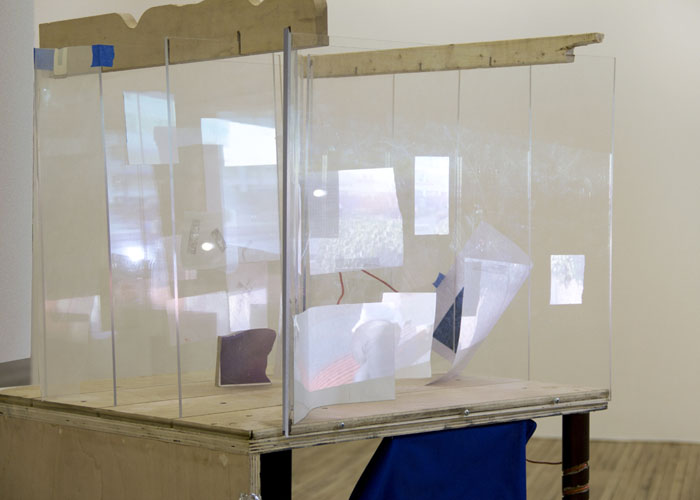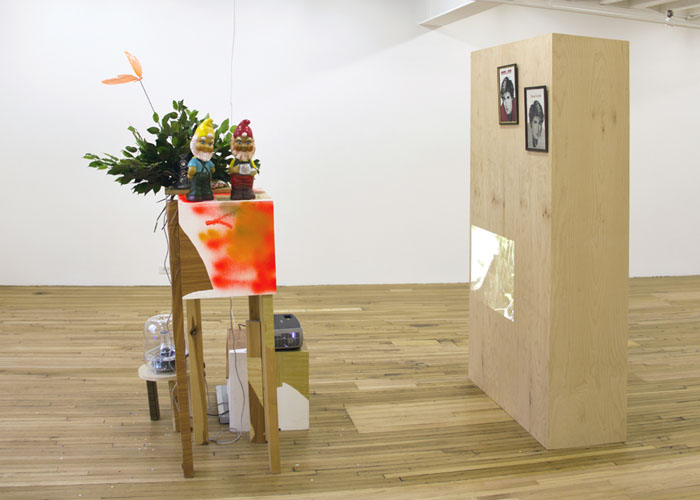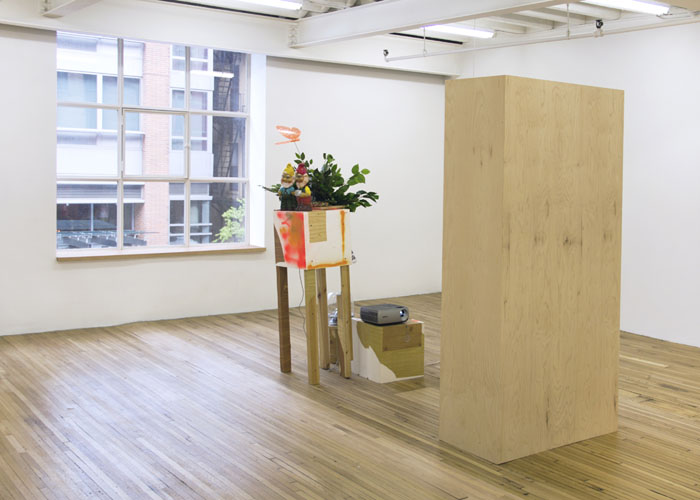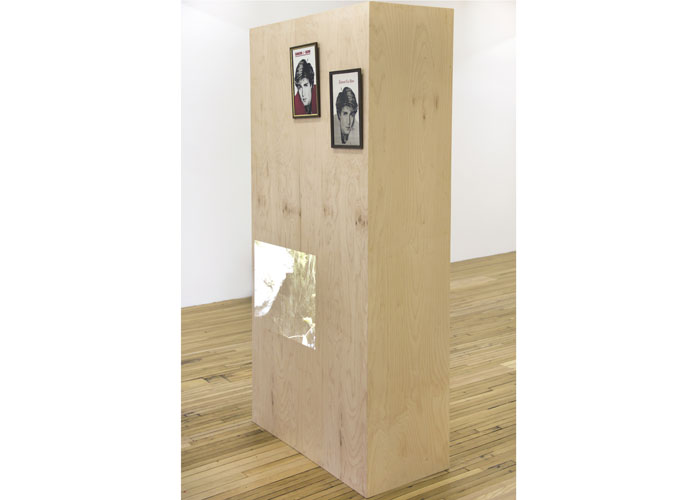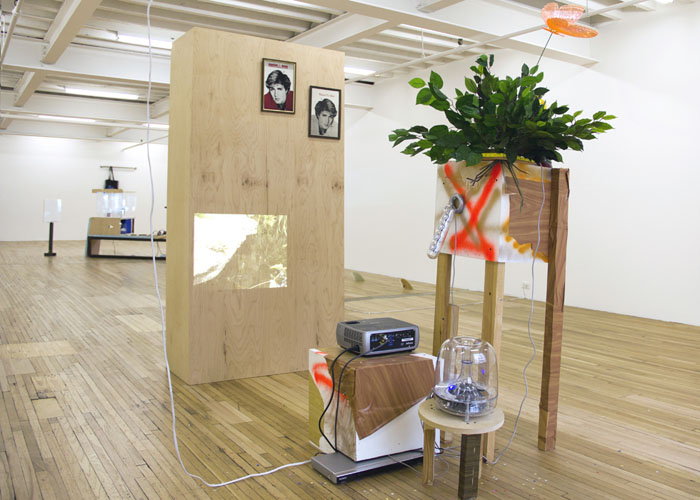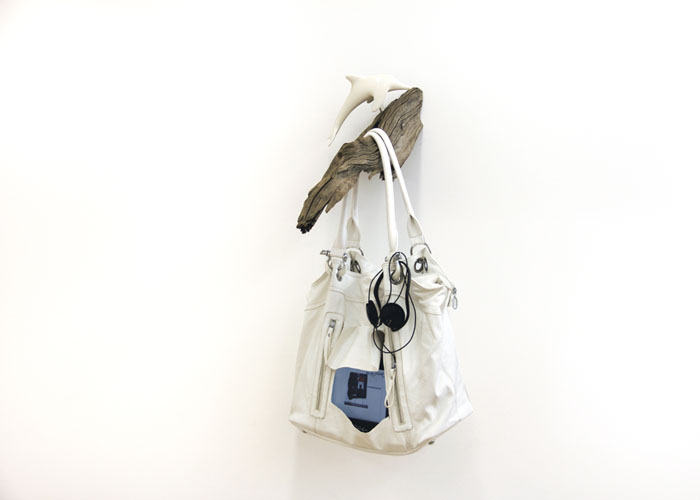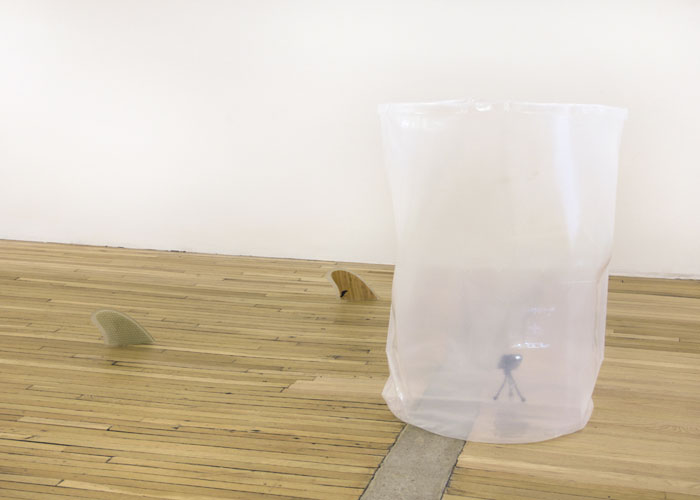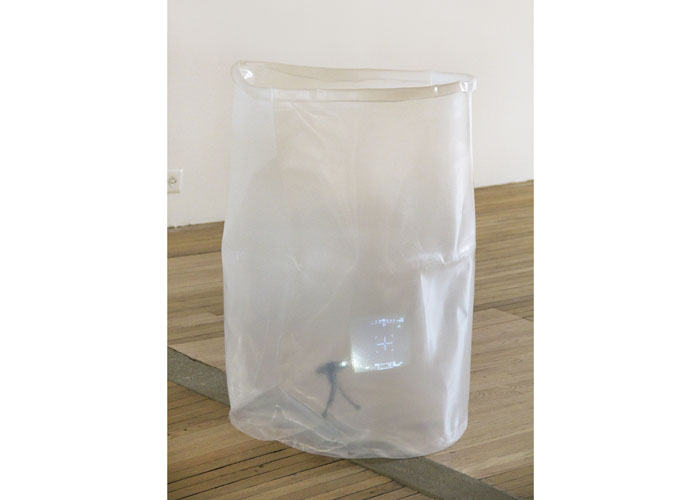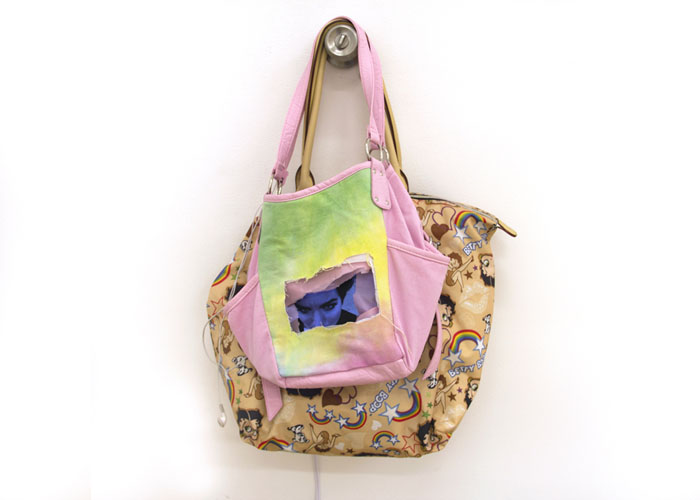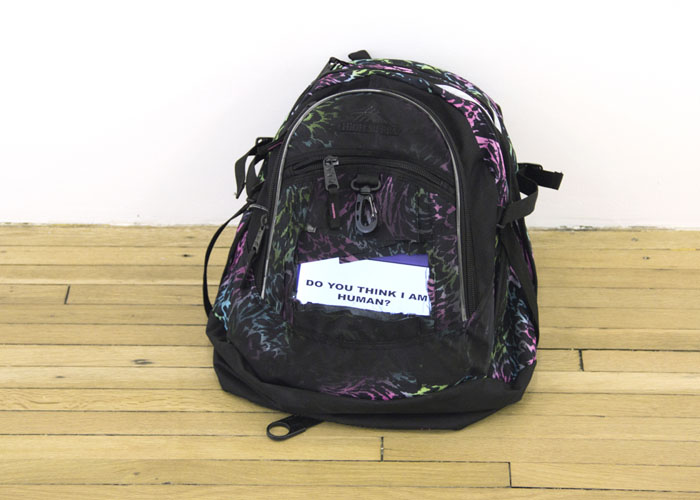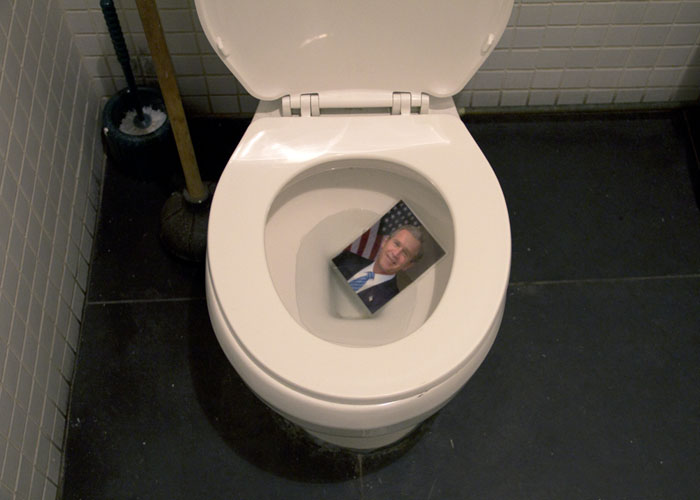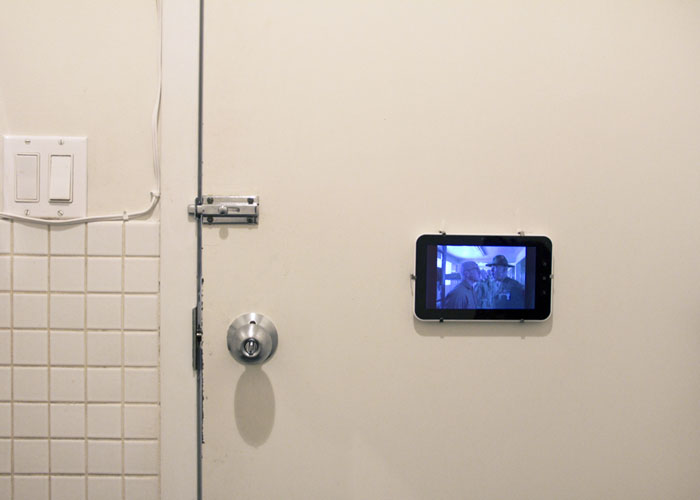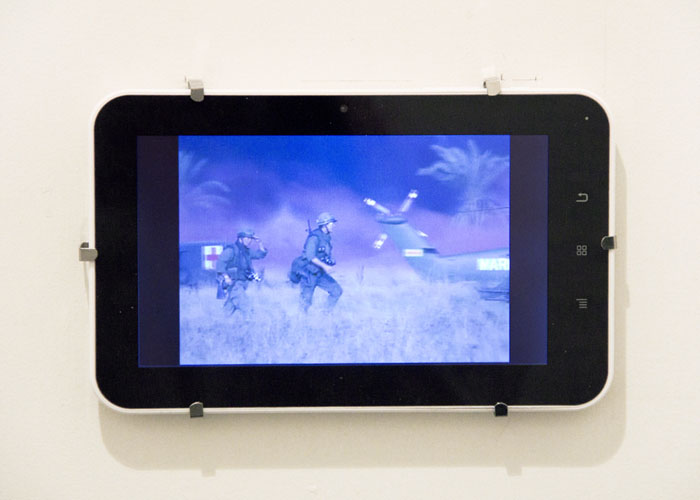SCREENS: Neïl Beloufa, Rachel Harrison, Jon Kessler, Josh Kline, Georgia Sagri, Nicolás Guagnini & Jeff Preiss, Anicka Yi
Murray Guy is pleased to announce the exhibition “Screens,” on view from 2 May through 22 June 2013. Please join us for an opening reception on Thursday, 2 May, from 6 to 8PM.
Continuing the gallery’s long engagement with film and video, this exhibition takes up the changing conditions by which moving images are conceived and presented both in art institutions and in the larger world.
The perpetual quandary of how to exhibit moving images in the white cubes of contemporary art often results, as we all know, in a plethora of flat screens, boxy monitors, and floating projections awkwardly situated amidst paintings, photographs, and sculptures. These moving images are generally positioned to confine their viewers’ attention; the conceit is that as the video or film unfolds we will disregard everything outside the rectangular frame of the screen, including the bodily discomfort that these circumstances frequently induce (e.g., a monitor on the floor that necessitates crouching on the ground, or a lengthy video we are expected to watch while standing, or loud sounds from other artworks bleeding into our ears.) The apogee of this strategy of isolating the moving image is the “black box” so often found in museums and galleries today; mimicking a conventional movie theatre, the “black box” uses a highly contrived architecture to eliminate distractions and “absorb” the viewer in the projected images.
But now, as digital screens have become far less expensive and abundantly portable, glowing smartphones have stormed the enclosed fortress of the black box; film and video “rooms” in museums and galleries have increasingly become places where visitors sit down to read their email or update their Facebook status. Video projectors have been miniaturized and have gone mobile, and moving images can no longer be confined or isolated: anything and everything is a potential screen. Becoming more and more ubiquitous — and often superseding still images or photographs — video is now, for instance, wallpapered onto buildings, sewn into clothing and accessories, layered into newspaper and magazine articles, and embedded in all manner of consumer products from cars to refrigerators to the omnipresent iPad/Pod/Phone. Meanwhile, new technologies like the much-anticipated Google Glasses have the potential to vastly expand this ecology of screens; with the smartphone display seamlessly implanted in our perception of the external world, everything within our field of vision becomes a receptive surface for projected images.
Responding to the changing sites and economies of the moving image, and taking advantage of new technological possibilities, the works in this exhibition refuse the model of the black box and its precariously enclosed offspring: they situate moving images within, alongside, or on the surfaces of things. From handbags to billboards to the bathroom wall, they ask viewers to consider how they see and respond to film and video as an integral part of — and never divorced from — objects, bodies, and architecture. And they invite us to consider the “objecthood” of screens themselves: not as disembodied surfaces, but as material things that are produced, that circulate, that have a front and a back, and that are embedded, framed, and sited. In other words, to think towards a new phenomenology of the moving image.
— Jacob King
(For more information or images, please contact the gallery at info@murrayguy.com or +1-212-463-7372.)
